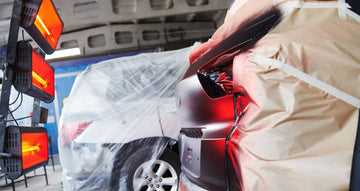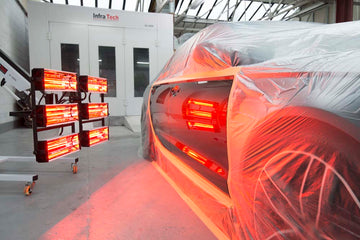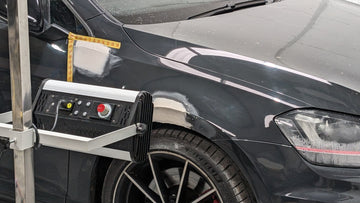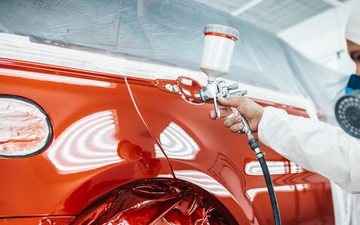
Paint is not something that you should just gloss over. It can be a permanent addition to any applied surface and alters the appearance and texture of the object. If you choose the wrong type of paint or application method, then the results can be extremely disappointing. One of the key factors to consider when applying paint is how it is dried, and temperature plays an important role here. The concerning consideration is not just about getting the job done as quickly as possible but making sure that the paint dries evenly, ensuring that the end result does not feature a rough surface or a runny appearance.
In this article, we will explain the effect that temperature has on the time to dry paint, and why infrared lamps are the optimal solution for your drying needs.
How Temperature Affects Paint Drying Times
When it comes to choosing the right kind of temperature to dry your paint job, it’s important to visit any suggestions and requirements that the paint manufacturer has supplied to you. Different types of paint can have varying effects when dried, so it’s essential to use a temperature and method that is suitable, ensuring that the paint will apply properly. If the paint is dried too quickly, then bumps can appear. If the paint takes too long to dry because of a cold temperature, then the work may look patchy and unpleasant. Paint is made up of several layers and you want to make sure that every bit of it, centre and surface level, is dried evenly.
As a rough guide, oil-based paint is usually best dried at a temperature between 4 and 32 degrees Celsius, while latex-based paint is best dried between 10 to 29 degrees Celsius. Of course, the material that the paint is being applied to can also affect the right temperature and the time it takes to dry. In particular, how solid the material is can really affect things here. If we use the following study example on SlideShare which analyses the results of a ‘marine coating assignment’, we can see how the temperature affects the drying time for different solid states. At 35 degrees Celsius, a material of 60% solids was the quickest to dry at under 5 hours, closely followed by 68% and 82% solids. Unsurprisingly, a material of 100% solids took the longest at around 7-8 hours, significantly higher than the other materials. The lower the temperature, the longer it took to dry the material. At 25 degrees Celsius, the material with 60% solids took just over 5 hours to dry.
Get an Infrared Drying Lamp
Now that you know how temperature affects the speed and effectiveness of paint drying, why not pick up your very own infrared drying lamp? Our infrared product range is extensive so we’re confident you’ll be able to find a lamp that fits what you require. All of our lamps significantly decrease the time it takes for paint to dry, boosting your productivity and saving you tons of money in the long run. If you have any queries, please don’t hesitate to contact us




